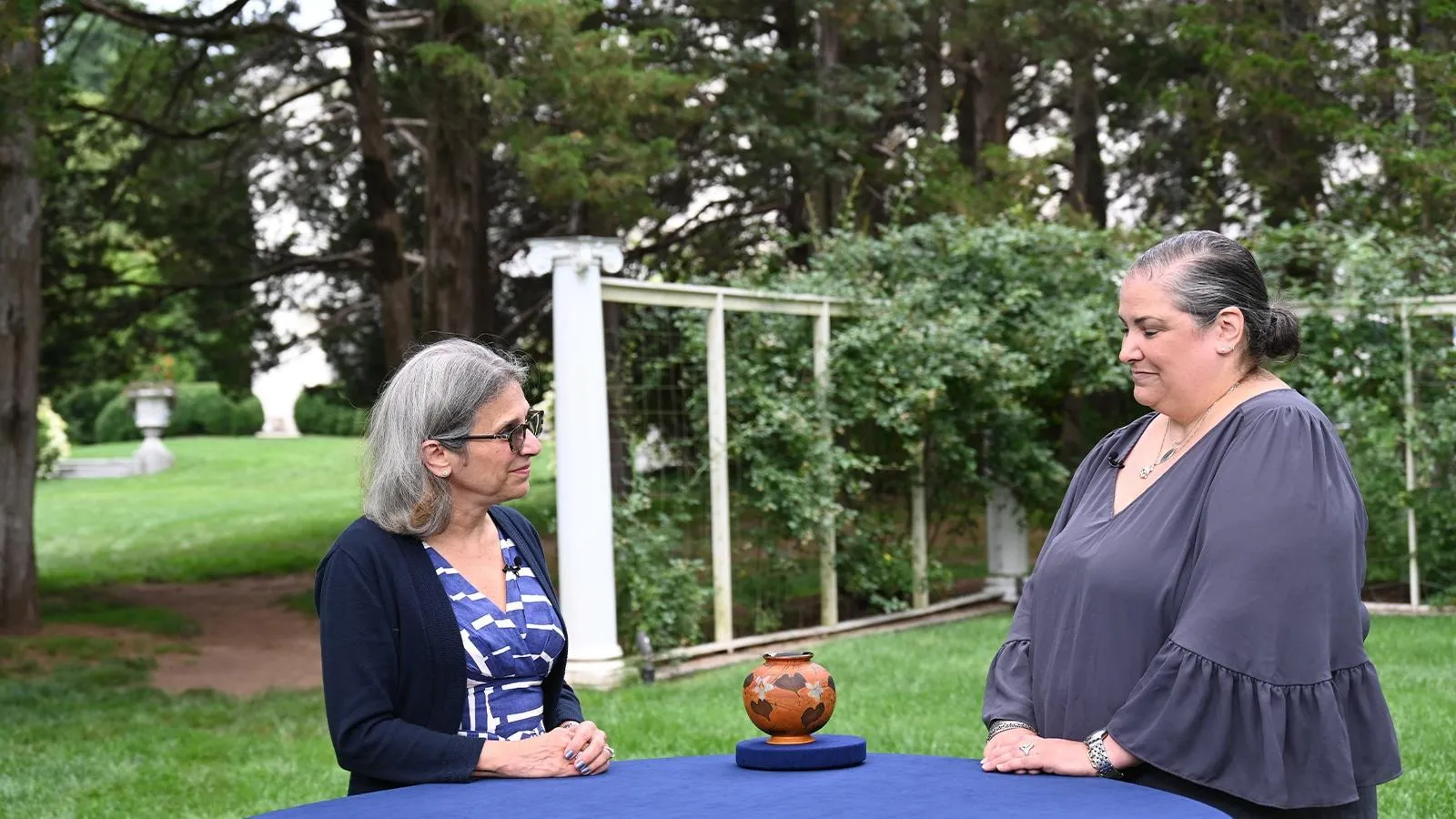GUEST: I received it as a high school graduation present. My father was in the jewelry business and I had a fascination with chronographs. I didn't know anything about it at the time. I kind of picked it out myself.
APPRAISER: Was it new when you got it?
GUEST: It was new when I got it, yeah.
APPRAISER: The brand is Heuer, and it's a pretty big company. And this particular model is called an Autavia, and that came from two things: automobile and aviation. And they combined the two together and they got Autavia, is basically how they came up with that name. What year did you get your watch? Do you remember...
GUEST: 1967.
APPRAISER: I notice that you've seemed to have kept it pretty original.
GUEST: It worked for... 18, 20 years, and then I kind of just put it away.
APPRAISER: If we look at the bezel of the watch-- you'll see that bezel right
there that turns-- it's pretty faded out. So this particular bezel was black. Do you remember it being dark when you got it originally?
GUEST: Yeah, black, yup.
APPRAISER: So it's faded out over time. It's anodized aluminum. But it's really good that you've left it alone, because collectors like originality. The Autavias were actually, originally were dashboard clocks.
GUEST: Mm-hmm.
APPRAISER: And they were put in airplanes and they were put in cars. They started making them in 1933, and they made them to 1957. And then started, in 1962, they started making chronograph wristwatches and they called them Autavias. And they continued that for about 25 years. And your watch has a case
that is a screw-back case. And that was done to create a water-resistant watch, or a waterproof watch at the time. And there's something really nice about your watch, is that you have the original bracelet with it. It's marked "Heuer" in the back. But when we open it up on the inside, we have a marking here, and it says "G" and "F," and it has a deer in the center. That's, that was a trademark of the company that made the bracelet for Heuer called Gay Frères. Over here, we have a date mark on it, and it says "1/66," which stands for the first quarter of 1966 it was manufactured. What did you estimate the value?
GUEST: I thought maybe between $4,000 and $5,000.
APPRAISER: Some of them do bring that. Yours is a better model because it has the screw-back case on it. It's more desirable. Your bracelet alone easily is $2,000 to $3,000 in value, just for the bracelet.
GUEST: (chuckles)
APPRAISER: Easily a $10,000 to $12,000 watch. So I think, all together, with the bracelet and the watch, you're looking at a watch that would easily go for $12,000 to $15,000 in auction.
GUEST: (laughing): Wow, I didn't expect that. That's great.











